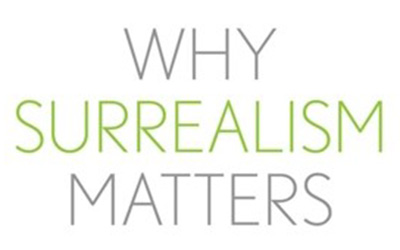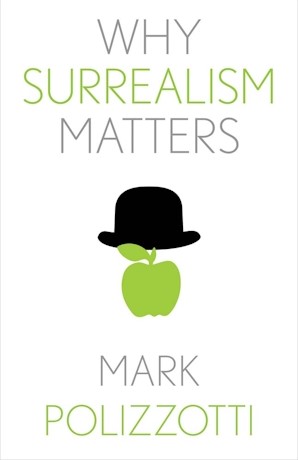
- Free Article: No
- Contents Category: Literary Studies
- Review Article: Yes
- Article Title: ‘Holding a lyrebird’
- Article Subtitle: A desire for widespread subversion
- Online Only: No
- Custom Highlight Text:
Like its precursor movements in the modernist avant-garde (Futurism, Cubism, Dada), Surrealism was primarily initiated as an innovation in poetry. The central Surrealist activities were the collaborative experiments in automatic writing, influenced by psychologist Pierre Janet’s Psychic Automatism (1889) and, in poetics, by Pierre Reverdy’s theory of the image as ‘the juxtaposition of two more or less distanced realities’. These experiments, undertaken between 1919 and 1923 by André Breton and his associates (Phillippe Soupault, Louis Aragon, Paul Eluard, Robert Desnos, and others), provide the theoretical basis for Breton’s 1924 ‘Manifesto of Surrealism’, the main tenets of which he would follow consistently for the next forty years.
- Featured Image (400px * 250px):

- Alt Tag (Featured Image): John Hawke reviews ‘Why Surrealism Matters’ by Mark Polizzotti
- Book 1 Title: Why Surrealism Matters
- Book 1 Biblio: Yale University Press, US$26 hb, 218 pp
- Book 1 Cover Small (400 x 600):

- Book 1 Cover (800 x 1200):

- Book 1 Readings Link: https://www.readings.com.au/product/9780300257090/why-surrealism-matters--mark-polizzotti--2024--9780300257090#rac:jokjjzr6ly9m
In its influence on poetry, Surrealism can be viewed as the most significant international literary movement of the interwar period. As Breton notes in his ‘Manifesto’, the main discovery of the automatic writing experiments was ‘the light of the image’: ‘the Surrealist atmosphere created by automatic writing … is especially conducive to the production of beautiful images’. This expansion of the poetic image spread into Spanish-language poetry though Federico García Lorca in the late 1920s and to South America in Pablo Neruda’s poetry of the 1930s. The black francophone poets of the colonies, such as Aimé Césaire of Martinique and Léopold Senghor from Senegal, absorbed this new approach (along with Surrealism’s anti-colonial politics) as students in Paris in the early 1930s. For Césaire, poetic imagery itself is a ‘revolutionary’ force, as he writes in ‘Poetry and Knowledge’ (1945): ‘It is through the image, the revolutionary image … that mankind finally breaks through the barrier.’ When Breton discovered Césaire’s Notebook for a Return to my Native Land in 1941, he described it as ‘the greatest lyrical monument of our time’.
This approach to imagery entered mainstream English poetry through the dense Apocalyptic style of Dylan Thomas and others, reaching Australia in this mode in the poetry of the Angry Penguins by the 1940s. Its firm repudiation in the ‘Ern Malley’ hoax, which in fact replicated Breton’s original automatic writing techniques, defined the restrictively Apollonian poetics of A.D. Hope and James McAuley in the 1950s. But a further strain of Surrealism emerged in the United States among the postwar generation: at least the first third of Frank O’Hara’s Collected Poems is an attempt to find an English-language correlative for French Surrealism; and this is thoroughly absorbed in the poetry of John Ashbery, who once said: ‘We all “grew up Surrealist” without being aware of it.’ By the psychedelicising 1960s, the Surrealist image had returned to Australian poetry with a vengeance, in the ‘drug poems’ of Michael Dransfield and his contemporaries (as well as in the lyrics Martin Sharp wrote for Cream).
The question posed in Mark Polizzotti’s compact and thorough summary, concerning the social relevance of the Surrealist movement to contemporary life, is one which Breton addressed to himself in his 1930 ‘Second Manifesto of Surrealism’. How could a discovery ‘that seemed to involve poetic language exclusively’ then ‘spread like wildfire’ to become a multinational movement affecting the broad fields of art, film, and graphic design – and beyond this, in Polizzotti’s own words, to become ‘less an aesthetic movement than a state of mind’? It is a similar question to that which Simon Schama confronted in his BBC series, The Romantics and Us (2020), and can be addressed in the same way. Like English Romanticism, Surrealism had its inception in anti-capitalist protest against the imperialism of nation-states. ‘The world we lived in seemed totally alien,’ Breton comments: ‘We were seized by a desire for widespread subversion.’ Both Breton’s ‘First Manifesto’ and Shelley’s ‘A Defence of Poetry’ (1821) align poetry with a revolutionary spirit that violently repudiates utilitarian materialism: for Shelley, poetry and money are ‘the God and Mammon of this world’; for Breton, poetry ‘decrees the end of money’. Like Shelley, and in similarly Hegelian terms, Breton champions the power of poetic Imagination to assert an ‘Absolute Reality’ that will form the basis for what he calls ‘a new declaration of the rights of man’.
However, as Polizzotti explains in an illuminating chapter, Breton’s real-life attempts to align the poetic with the political were largely discouraging, and led to the disintegration of the original movement. His early embrace of communism precipitated the resignation of his close collaborator Philippe Soupault in 1925, swiftly followed by Antonin Artaud, who denounced ‘toilet paper revolutionaries’. The rebranding of the journal La Révolution Surréaliste to ‘Surrealism in the Service of the Revolution’ in 1930 indicates a further surrender to the Party; this was insufficient for the Stalinist Aragon, who departed in 1932. But Breton took a principled stance against the 1934 Zhdanovist edicts demanding Socialist Realism in art, which he termed ‘mental extermination’, and became a fervent anti-Stalinist following the 1936 Moscow Trials. His major statement, ‘For an Independent Revolutionary Art’ (1938), written in collaboration with Leon Trotsky, asserts their shared belief in artistic autonomy during a period of extreme politicisation. This position became unfashionable in postwar Paris, where Jean-Paul Sartre’s stance of ‘commitment’ (a lighter form of Zhdanovism) emerged as the prevalent intellectual force.
As Breton’s biographer, it is natural that Polizzotti’s account of Surrealist influence focuses closely on his central role. From a historical perspective, Surrealism can be considered a more disparate movement radiating from the central precepts of the automatist experiments. The psychogeographic wanderings of the Situationists, for example, can be located in the similar exploration of urban environments described in Aragon’s Paris Peasant and in Breton’s own works in prose. The history of Surrealism in cinema can be traced through major figures such as Raoul Ruiz, Nellie Kaplan, and Jan Svankmajer, to name a few. And Penelope Rosemount’s revelatory anthology, Surrealist Women (1998), vastly expands our understanding of what had previously been considered a movement dominated by Western European men. With the recent nomination of Joyce Mansour for the Griffin Poetry Prize, and with the art of Leonora Carrington and Remedios Varo swiftly moving toward the cult status of Frida Kahlo, the movement continues to expand. These works remain consistent with Breton’s statement that Surrealism ‘exists in the interweaving of the natural and the supernatural, in the emotion of holding a lyrebird as it is slipping away’ (Mad Love, 1937).


Comments powered by CComment